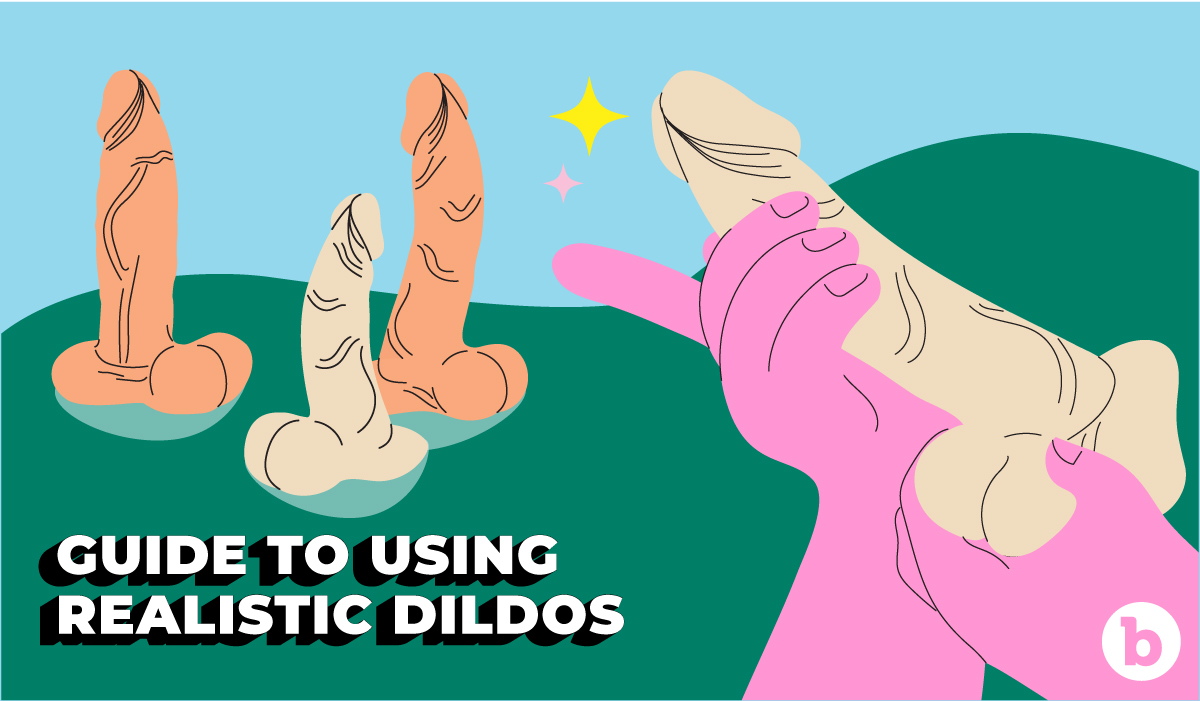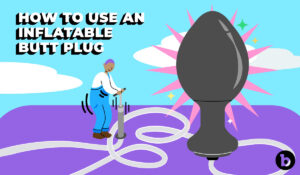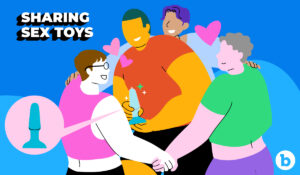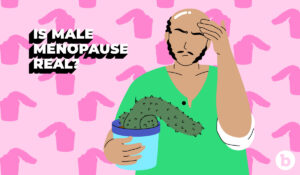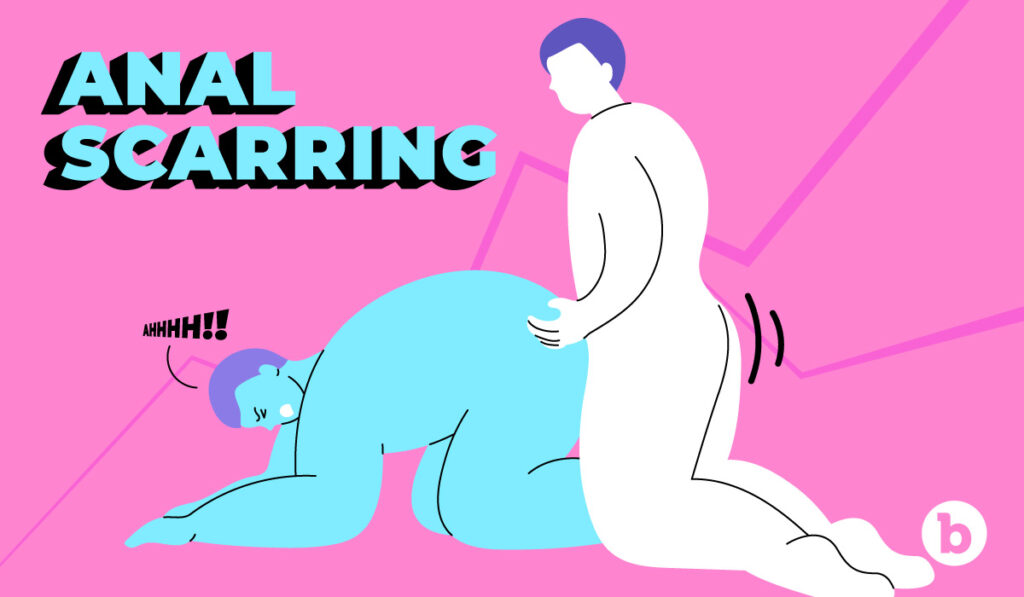
Don’t Let Anal Scarring Prevent You from Being Your Best Bottom
What causes anal scarring? Bobby Box reveals his painful experience and spoke with renowned anal surgeon Dr. Evan Goldstein on managing pain from old anal scars and fissures.
Roughly three years after coming out, I went an entire year without bottoming due to a painful surgery after a particularly traumatizing sexual experience.
I'd just moved to Toronto and was attending a popular hedonistic event where, essentially, ticket holders were given two options: to dance in a pile of hairy, sweaty men (yum), or hoist yourself into a sling and get devoured by rows of hungry daddies (double yum). I, a timid gayby at the time, decided to be demure and stand by the snack bar and witness all the debauchery as a voyeur.
As I was licking neon cheddar dust off my fingers, a handsome older man (we'll call him Jeb) approached me. He was short and stocky with incredibly kind eyes. After a barely-scratching-the-surface-level conversation, we started making out and continued doing so for the remainder of the evening.
Around 2 AM, Jeb asked me to come home with him. Jeb, I should mention, was very well-endowed, and his pendulous member was weighed down by an anchor-sized Prince Albert piercing. To my own amazement, I managed to take Jeb like a champ... or so I thought.
The following morning, I went to the bathroom and, to my surprise, witnessed an abnormal amount of blood clouding the toilet water. I had an internal freak out upon this discovery, and promptly got dressed, called an Uber, and rushed home. After a visit to the local clinic the following morning, I discovered Jeb's piercing had torn through my rectum, resulting in a considerable anal fissure that needed surgery.
ANSWERED: How to prevent anal fissures
The surgery, which required sedation and an epidural, left behind a scar that made bottoming unbearable. Every time I had receptive anal intercourse, the area around my anal scar would be incredibly sore for days; it felt like the wound was constantly being reopened. It had gotten to the point that I feared I'd never bottom again, which, as someone who prefers bottoming, sent me spiraling.
Before I decided to tragically hang up my bottoming hat so early in my career, I reached out to Dr. Evan Goldstein, a queer-friendly proctologist, anal surgeon and co-founder of Future Method, whose advice would both save my hole and restore my soul.
Together, he and I created this guide to managing anal scars so that you too can return to your former bottoming glory.
WHAT CAUSES ANAL SCARRING?
There are a number of different reasons someone can have an anal scar. In fact, Goldstein says it is a "super common and frequent ailment" at his practice, Bespoke Surgical, in NYC. He says these issues often arise from injuries when bottoming (say, a partner is too rough, you aren't using enough lube, or boundaries aren't being respected) as well as improper and frequent douching.
RELATED: The Good, the Bad, and the Messy of Frequent Enema Play
Most commonly, though, anal scarring is the result of surgical procedures to treat warts, chronic fissures, and hemorrhoids in the area, all of which are relatively common among those who regularly engage in receptive anal sex.
WHAT MAKES ANAL SCARRING PAINFUL?
What makes scarring a less-than-stellar physical experience is that the anal scar can restrict your hole from fully opening. On an unaffected hole, the skin and muscle in the area function independently, but ultimately work together, like tag-team partners.
When scarring is added to the mix, however, the muscle and skin fuse together, which can either make your hole unable to accommodate what it normally can or the underlying muscle won't be able to fully relax."These restrictions then lead to chronic pain, local tearing, and other issues that prevent you from having pleasurable anal sex as a bottom," Goldstein says.
MAKING YOUR SCAR MORE PLIABLE FOR BOTTOMING
After about eight weeks post-op, Goldstein has his clients use toys and perform local pelvic floor physical activities to help shape and mold the scar. "Scar tissue is weak and restrictive, and for anal sex and the pressures that come with it, we need scarring to be the opposite: strong and pliable," he says.
To make that happen, you can start dilating and using toys to restructure the anal scar. Just make sure you use products specifically developed for anal care, like b-Vibe's anal dilator set, which is made of a body-safe material called borosilicate glass.
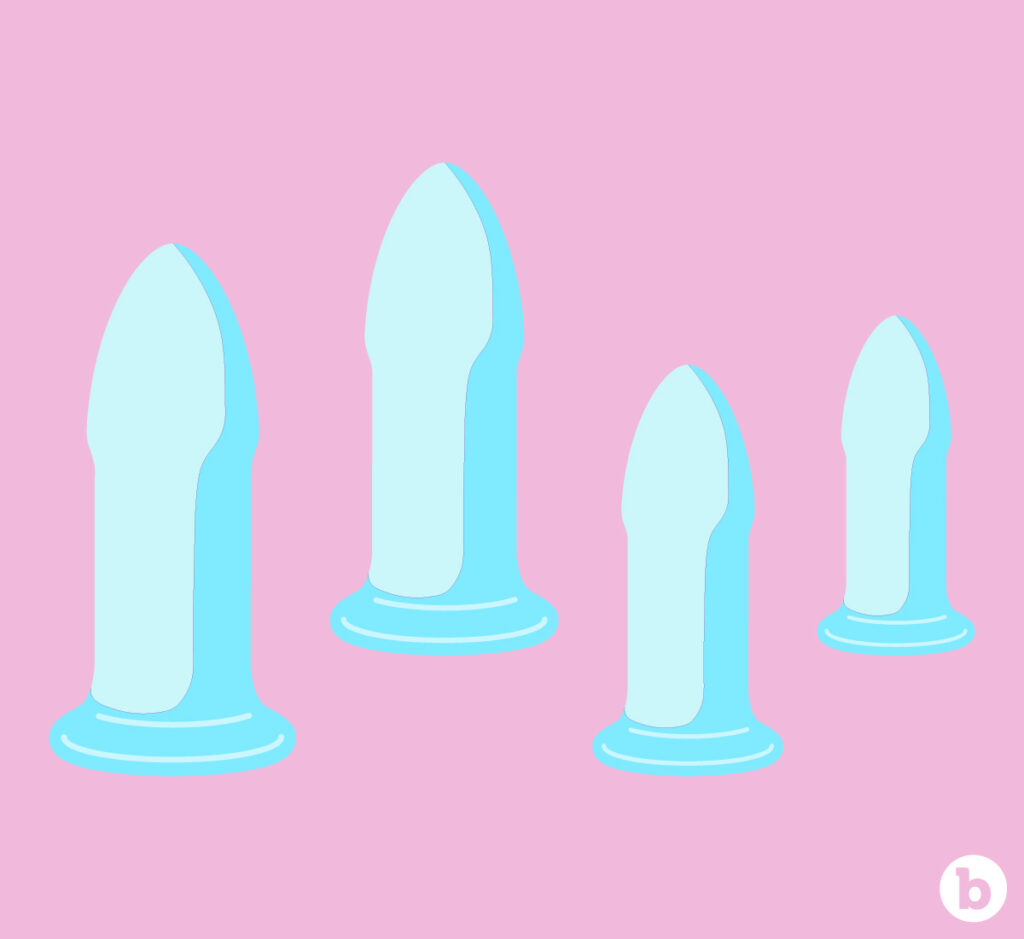
"I love a glass dilator set because it allows for more rigidity in its dedicated work," Goldstein says. "The in-and-out motion and concentrating on the scar lines that are causing you issues will hopefully strengthen and become more elastic over time, which will then allow improvement when you bottom."
Unfortunately, many people, like myself, will not have such a qualified and queer-informed doctor such as Goldstein. Meaning you won't have access to his thoughtful services unless you travel to his practice in New York. I personally couldn't even book a follow-up appointment with the doctor who performed my surgery. Thankfully, I've worked with Goldstein many times in the past, and he told me exactly what I needed to do.
"For the first few times you're dilating post-surgery, you will definitely experience some different sensations, including mild discomfort and maybe even some blood," he warned. "Obviously, we don't want crazy pain and large volumes of blood, but the key with the friction from the toys is to create a reaction in the scar that will add strength and distension capabilities."
So don't be worried if you find the initial dilation sessions mildly irritating. Each time you dilate, aim to insert and remove the smallest dilator in the set about 10 to 12 times. As you start to feel more confident, you can progress by increasing these repetitions and eventually moving toward the larger toys in the set.
"Over the course of 3-5 minutes, insert the dilator about 4-5 cm into the anus, right beyond where the muscle lies," Goldstein says. "It will take four to six times to insert because those muscles need time to relax. If met with resistance, pull the dilator out, re-lubricate, and do it again."
Even if you think you can take more, Goldstein advises you to start with the smallest dilator and use it consistently for a week or two before graduating to the next size and then repeat the same process over the subsequent weeks.
"It takes time and the key is more mental control of how one can control or relax and learn to control like any other muscle we have," Goldstein says. "If you have ever topped someone and they can completely open their anus, it's not due to looseness, but rather more about anal control."
By adhering to this process, the scar will hopefully soften up and allow itself to expand and contract in a normal way. Typically, most people will know within four weeks of toy play if these exercises are effective. However, if issues still arise, you may want to revisit a doctor for an examination, which, if you visit Goldstien's office, may require an anal botox into the skin or muscle to help with relaxation. In more extreme cases, formal surgery to open up scar lines might be necessary.
TIPS FOR BOTTOMING WITH A SCAR
Even with all the work you've done to improve the flexibility of your scar, you should still be extra careful to ensure it doesn't happen again. Something you can do to prevent future injury is to be liberal with lube — Goldstein recommends a silicone-based lubricant, as they tend to be thicker and last longer.
You should also be especially cautious during the initial stages of insertion, guiding the top through the process so that you're comfortable. If they have an issue with your requests, kindly tell them to leave; you don't want to go through another formal surgery because of somebody else's selfishness.
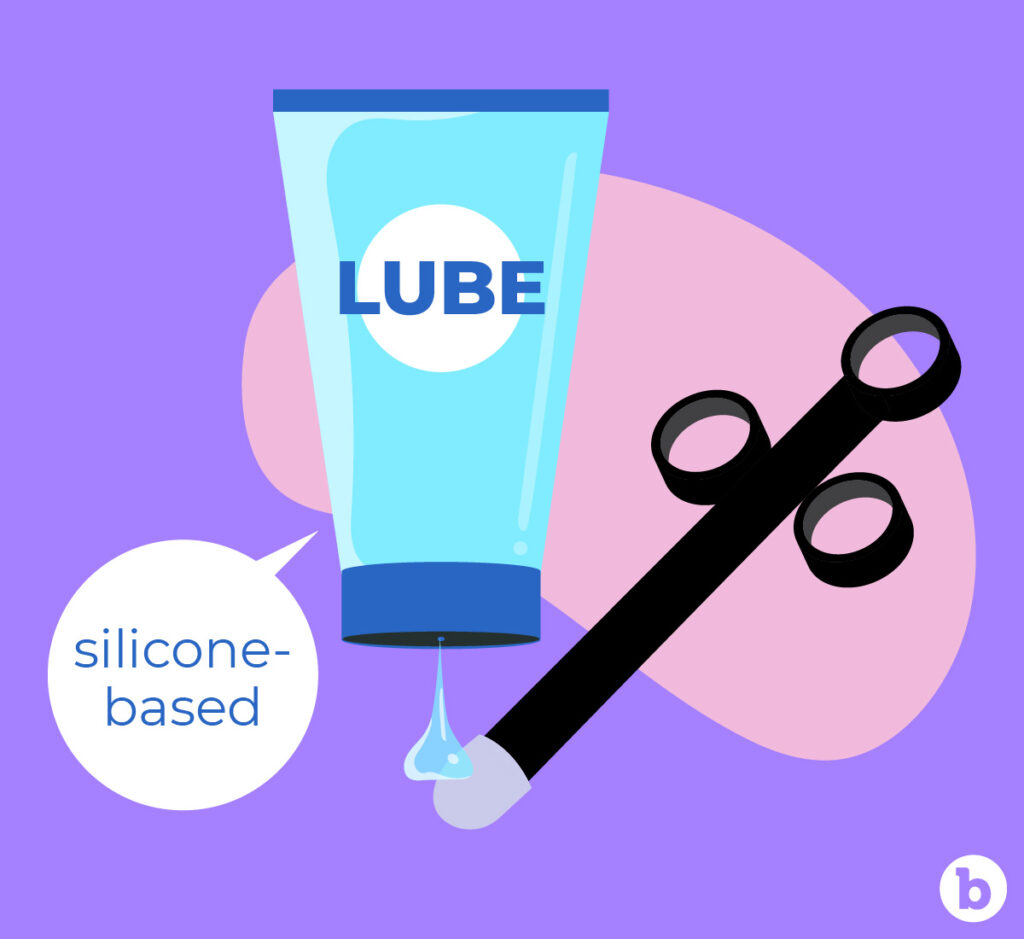
When applying lube, don't just apply it to your hold. Make sure the penis and toy are slicked up, and use a lube applicator to coat the entire anal canal. If you have the time, try to pre-dilate before engaging in any penetration to relax the sphincter muscles at your own pace and on your own terms.
You should also note where the scar is, and choose your first position accordingly. "I recommend the bottom on top when you're starting out because it allows the top to be in full control of the depth and speed of penetration," Goldstein says. "From there, once you feel comfortable and relaxed, you can experiment with more advanced positions."
For example, if you're scarring is towards the back to the anal canal, doggy, and similar positions may actually feel worse, as the penis and/or the toy are directly hitting that scar line. The key is to understand not only which positions are better suited for your scarring, but also how to offset your pelvic angle or your partner's height and thrust in a way that improves pleasure and minimizes discomfort.
PRODUCTS FOR PAIN MANAGEMENT
As mentioned, scarring can cause discomfort and sometimes pain if we become overzealous in the dilating process. When it comes to quelling this pain, Goldstein recommends Epsom salt baths (I took multiple every day post-surgery; it is a life-saver after a painful bowel movement), Calmol-4 suppositories, over-the-counter PrepH, and the Future Method Soothing Cream.
“If your symptoms are more severe, you may need a compound medicine with a steroid, blood pressure medicine to relax the muscle, and a numbing gel to alleviate some discomfort,” he says.
If the area is irritated, take a week off to let things settle and, when you feel ready, continue with the dilation protocol. If you should ever have to deal with anal scarring, try sourcing a queer-informed doctor who knows what you want to do with your reconstructed hole. You should also be proactive with dilating to make the scar pliable before it matures, lest you risk another surgery. Most important of all, don’t let these scars instill any kind of shame or fear, or prevent you from seeking treatment. The reason these things happen is that there are not enough educational resources on how to have safer anal sex.
But, you’ve found this b-Vibe Queeries column, so rest assured, you’ve come to the right place.
